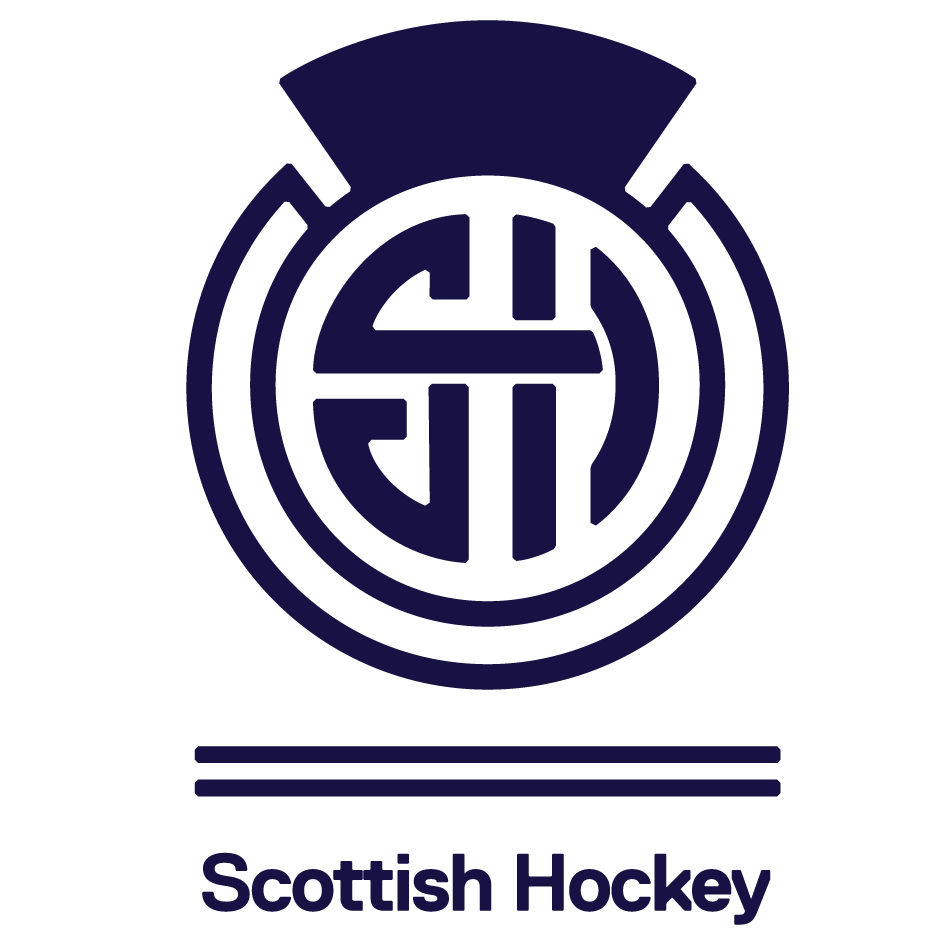Player Pathways
Improving the hockey experience: more people, more stages, more often
People play hockey for a number of reasons. Some are interested in playing for fun and developing, maintaining, or returning to an active and healthy lifestyle. Others enjoy playing in a team with their friends in schools and clubs at varying degrees of competitiveness. A number of those players go on to play in our talent and performance pathways, and a select few progress to set their sights on playing for their country at senior level and winning medals at global events.
As a result, we have developed a pathways model for the sport in Scotland that broadly comprises four different areas for the sport:
-
Fun Start to Hockey
-
Active Lifestyle Hockey
-
Competitive Hockey
-
Talent and Performance Hockey

Fun Start includes the introduction to the game and learning to play, with an age guide of 5 to 13 years old. Active Lifestyle covers those aged 12 to 80 who are keen on healthy social interaction.
Competitive Hockey is for those aged 12 to 80 who enjoy playing on school or club teams at varying levels of competitiveness. Performance Hockey covers the stages from early talent development from ages 12 to 16 up to the most senior level of those who wish to play for their country.
Whatever the motivation, all participants are important parts of hockey’s pathways in Scotland – and while we are all somewhere on the pathway, there are many different pathways that allow players to move from one to another as frequently as they wish, or their current ability takes them.
By developing the Playground to Podium Pathways model we are able to simply capture these pathways and use the model as a practical tool for all stakeholders in hockey (participants, coaches, teachers, officials, administrators, parents, sponsors etc) in understanding, planning and supporting the people and programmes that contribute to the relevant parts of the player pathways.
This enhanced understanding of the hockey pathways in Scotland will help us improve the experience of the fun, friendly and exciting sport for life – for more people, at more stages of the pathway, more often.
Framework
We understand the varying opportunities available for people to participate in hockey. The aim is to attract, retain and develop players to their full potential or interest level through schools, universities and clubs. Player Pathways provides a framework as well as resources that can be used to deliver hockey locally.
Game Format
Small-sided games (4s, 6s, 8s) support the development of individuals’. The reduced numbers and space is representative of the full 11-a side format and provides players’ with the opportunity of repetition without repetition.
Physical, mental, technical /tactical and social aspects are incorporated in game play and benefit the development of people not just hockey players. Players’ 5C’s (confidence, connection, character and caring, competence and creativity) can be developed through increasing contact time. Knowledge and skill improve through an increase in opportunities for players to engage, have fun, make decisions, and are offered ways to be creative.
The resources below can be used in the Fun Start and Active Lifestyle stages of the pathway as well as in the training environment of the Competitive Hockey and Performance Hockey stages. Use small sided games at any stage on the Player Pathways to provide the opportunity for players to develop effective decision making, while helping them become highly skilled and creative, self-organised, fast and robust, as well as developing the understanding of what it takes to win. .
Fun Fours
In Fun Fours there is a simplification of game situations and basic rules for players to develop an understanding of the game within a smaller pitch. There are fewer players but it is still representative of the 11 a side game. Fun Fours offers more involvement, greater enjoyment and introduces decision making and problem solving in a more festival type atmosphere to support players’ learning.


DOWNLOAD:
Fun Fours Format and Rules sheet
Super Sixes
Continuing to utilise a smaller pitch and fewer players is key to players’ enjoyment; decision making and problem solving, however this format offers an increase in complexity of game situations and rules for players to continue developing an understanding of the game. An emphasis can also be placed on elements related to players’ needs while incorporating technical, tactical, physical and psychology again in a more festival type atmosphere to support players’ learning.


DOWNLOAD:
Super Sixes Format and Rules sheet
Delivery Resources – Super Sixes
Eights
Continuing to increase complexity through additional space and greater numbers, players’ can develop further technical; tactical; physical and psychological elements. Opportunities could be offered to lead within groups or teams in order to make decisions and problem solve. Players can also set individual and/or team goals as part of their development during training and competition.


DOWNLOAD:

Talent & Performance Pathways
Scottish Hockey’s talent and development pathways form part of a fully integrated “playground to podium “pathways model. The talent and performance stages help aspiring athletes and those supporting them understand how they can progress through the performance pathways to achieve their ambitions and potential. This will also help Scottish Hockey achieve our mission of delivering successful Scotland teams and medal winning athletes.
There are five stages in the performance model, with four being delivered directly by Scottish Hockey and a fifth elite level facilitated by GB Hockey’s senior programme, where the very best athletes from Scotland, England and Wales are aspiring to Olympic success in the full time centralised programme at Bisham Abbey in Berkshire.
The first two stages or “talent phase” are where talent is identified and developed at youth level, with some then progressing into the “performance phase” for identified athletes who display elite or high performance potential at that time. The majority of athletes who feature in the talent pathway do not go on to represent Scotland at senior international level. However the vast majority do go on top play, enjoy and make significant contributions to club hockey at a high standard. It is important to recognise that this is also a valuable output of the talent pathway.
It is also important to recognise that while players may not feature in the talent pathway at youth level or progress immediately to the performance stages of the player pathways, there are various paths a player can take that will allow them to find their way to senior international level. Scottish Hockey is committed to continue building stronger domestic performance pathways that allow players the opportunity to fulfil their potential in the sport. The introduction of the Inter-City level of competitions to bridge the gap between club and international level is an example of the new pathway opportunities being created for athletes to show they have the ability to progress.
Talent
Performance Stage 1: Early Talent Development – where young players have demonstrated enhanced skill levels and been identified as having performance potential. It is important to recognise that at this stage, usually between 12 and 16 that young people mature and develop at different rates. Therefore it is important to keep the pathway relatively wide and open at this stage to allow players to progress at their own pace. This stage allows players to begin to develop technical, tactical, physical and mental performance foundations.
Performance Stage 2: Enhanced Talent Development – Players at this stage, usually between 15 and 19 are progressing their skills and any acquired performance foundations, while building the capacity to become performance athletes. They will be learning the fundamental demands of playing senior club hockey and competing against talent players of their own age group.
The GB Talent Development Framework has been designed in partnership with the other home nations to make best practice common practice as players’ progress along the talent pathway – and Scottish Hockey is committed to embracing and embedding its principles within Scotland’s Hockey identity.
Download:
Great Britain Talent Development Framework

Performance
Performance Stage 3: Performance Development – When reaching this stage between the ages of 18 and 22, differences in maturation and time on task begin to level out, usually along with more clarity on player’s ambitions and life choices. As a result, a smaller number of athletes with elite or high performance potential can continue to develop the capacity and skills to progress towards senior international level.
Performance Stage 4: High Performance – For the best and most committed hockey athletes who reach the Scotland high performance programme and have the honour of representing Scotland at senior international level on the world stage. Some of these athletes will have had some GB experience at EDP level and may aspire to performance stage 5 and representing Great Britain at the Olympic Games.
Performance Stage 5: Elite Performance – Athletes at this stage will have been selected for the Great Britain senior programme, which is run by GB Hockey. With this comes the opportunity to compete at the pinnacle of the sport at the Olympic Games.

In This Section
Please select a section you would like to view.



